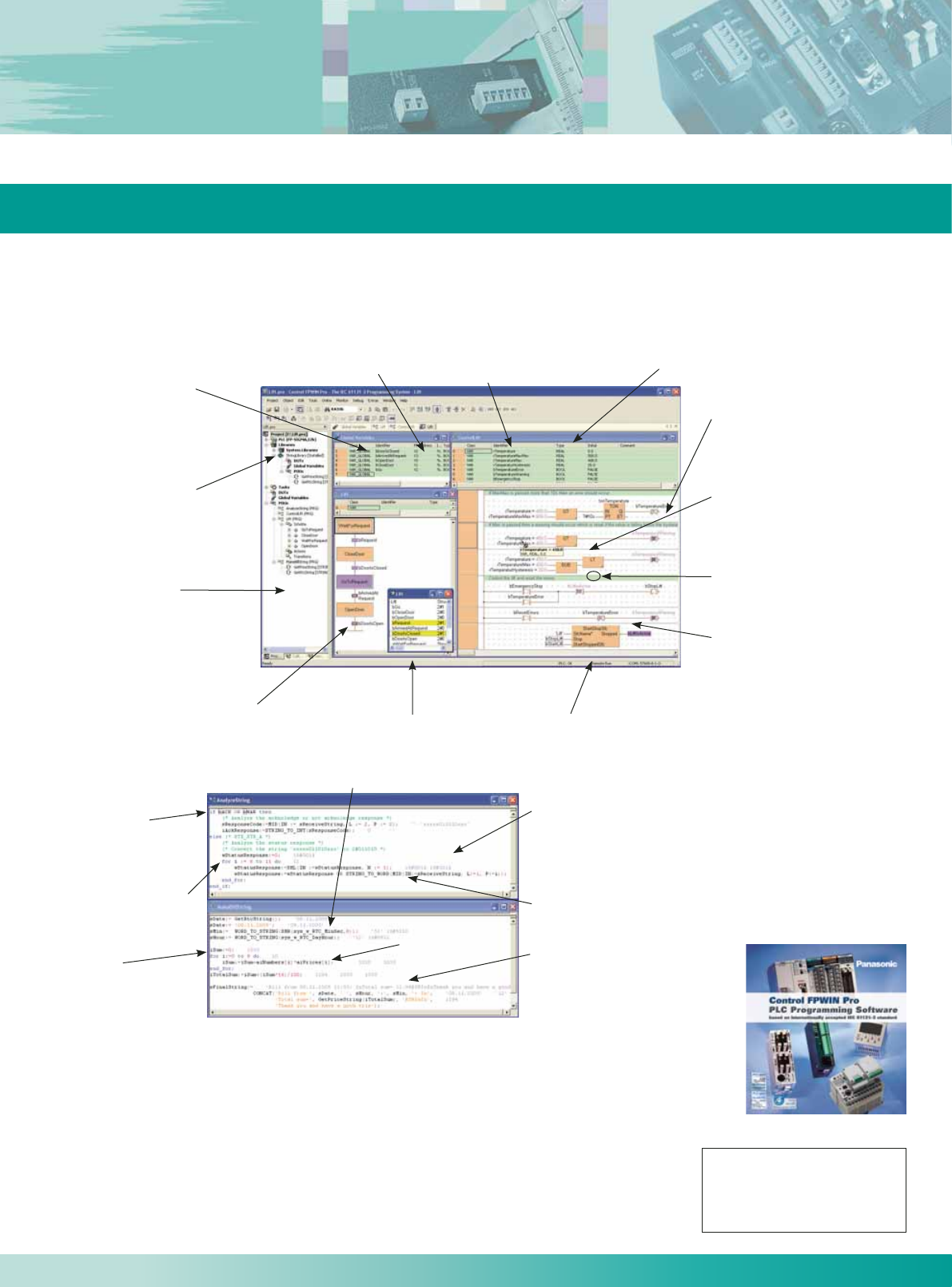
19
Con
t
ro
l
F
PWIN Pro
Programming According to the International Standard IEC 61131-3
FPWIN Pro is the Panasonic programming software developed according to the international standard
IEC 61131-3 (for Windows 98, NT V4.0, 2000, ME or XP). This new version is a result of experience gained
over many years. We were one of the first PLC manufacturers to offer an IEC 61131-3 programming software,
and we are a leading member of the international organisation PLCopen.
The most important highlights at a glance:
One software for all FP Series PLCs.
5 programming languages (instruction list, ladder diagram, function block diagram,
sequential function chart, structured text) available for all PLCs.
Programme organisation units, task and project management provide clear structure.
Reuse of ready-made functions and function blocks saves time for programming and debugging.
Online monitoring and diagnostics.
Forcing – Turning off input and output contacts via the PC.
Modem communication for remote programming, service and diagnostics.
Extensive comments – online documentation created hand in hand with the programme.
6 languages are supported: English, German, French, Italian, Spanish and Japanese.
Part numbers:
FPWINPROF: Full version
supports all FP Series PLCs
FPWINPROS: Small version,
supports FP-e, FP0, FP-X
and FPΣ (Sigma)
Free demonstration CD
Input and output variables
are defined once in the
global variable list
Multiple address assigment
is caught automatically
by the compiler
Local variables are allocated
automatically by the compiler
Type safe programming using
simple or complex data types
Functions can be saved in
libraries for future reuse
Navigator with tree
representation of called
functions provides an
overview even for very
complex projects
The SFC editor (Sequential
Function Chart) allows you to
easily visualize processes
Additional window for monitoring
and forcing variables
Special functions for controlling the
SFC program from another program
Long variable names make the
program self-explanatory
Temporary variables are allocated
and released automatically by the
compiler
One instruction for different
data types (overloaded instructions)
Comfortable programming in the
graphical LD editor (ladder diagram)
Structuring with
selection statements
Using loops for running
through incoming data
...or arrays
Easy handling of
formulas and
arithmetic
expressions
...or for generating
formatted output
strings
Using STRING
functions for analyzing
incoming data...
Using aliases for PLC-independent
access to the special data registers, e.g. RTC
The ST editor
(Structured Text)
solves complex
programming tasks
07/2007


















